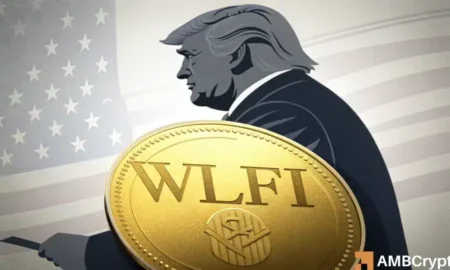The Future of Bitcoin: Macroeconomic Insights and Market Sentiment
As the cryptocurrency landscape evolves, macroeconomic factors increasingly suggest growth potential for Bitcoin (BTC) and the S&P 500. Recent trends indicate that despite facing challenges, particularly in liquidity inflows, Bitcoin stands at a critical juncture that could define its short-term trajectory. This article delves into the current market conditions and sentiment surrounding Bitcoin, focusing on the potential influences of both domestic and international factors.
Current Market Dynamics
Over the past week, Bitcoin has experienced a noteworthy decline of approximately 10% following a surge to an all-time high on August 14. This downturn can largely be attributed to low liquidity inflows, which often indicate bearish market conditions. The phenomenon of liquidity droughts tends to signal an offloading of assets by investors, particularly as the market approaches seasonal peaks. Notwithstanding these challenges, new macroeconomic insights offer the possibility of a bullish outlook, although the threat of a reversal remains significant.
Positive Macroeconomic Signals
Key macroeconomic indicators, such as the Fed Financial Stress Index (FFSI), reveal a favorable environment for both Bitcoin and the S&P 500. The FFSI tracks market tension, with readings above 0 signaling sell-side pressure, while values below 0 indicate a calm market that may be conducive to buying activities. Currently, the FFSI is positioned below 0, suggesting that there is still room for further market growth. Historically, metrics like these have been predictive of major market movements, including significant trends witnessed during the pandemic lockdown of 2020.
Bitcoin’s Performance vs. S&P 500
In the context of market sentiment, it is worth noting that Bitcoin has outperformed the S&P 500 considerably over the past year, with gains of 86.2% against the S&P 500’s 15.3%. This disparity indicates a stronger appetite among investors for Bitcoin, as indications suggest that when buying resumes, funds are likely to flow into Bitcoin rather than the S&P. The current phase of the market has been described by renowned crypto analyst Joao Wedson as a “calm/observation” stage, where the market appears intellectually stable but susceptible to rapid fluctuations. Importantly, a sustained break above 0 on the FFSI could be an early warning for potential instability in the U.S. economy, which may challenge risk markets, including Bitcoin.
Potential Impact of Asian Markets
Asia plays a crucial role in Bitcoin’s current dynamics, exhibiting early signs of investor interest. The Korean Premium Index has recently shown a reading of 0.3 on CryptoQuant, suggesting a recovery trend in the region. This follows an extended downtrend that may now be reversing. If this positive momentum continues, it could attract more inflows, especially from new cohorts of investors keen to enter the market. Conversely, indicators such as the Coinbase Premium Index have revealed a drop to 0.017, pointing towards a potential increase in sell-side activities among U.S. investors, although a rebound could bolster the bullish sentiment for Bitcoin.
Navigating Uncertainty: Investor Preparedness
Awareness of potential pitfalls is crucial for investors, especially when the markets are teetering on the edge of significant macroeconomic changes. Analyst Joao Wedson has highlighted that while macro metrics are vital for understanding market conditions, price action often reacts quicker than these indicators. As we look further into 2025 and 2026, instability in major Asian economies could emerge as a serious concern, potentially disrupting Bitcoin’s current rally. As such, it is imperative for investors to remain vigilant and prepared for unexpected shifts in market dynamics.
Conclusion: The Path Ahead for Bitcoin
In conclusion, while Bitcoin currently faces challenges due to liquidity constraints and fluctuating investor sentiment, macroeconomic signals remain inherently supportive of continued growth. The Asian market’s renewed interest in Bitcoin further adds to the optimistic sentiment surrounding the cryptocurrency. However, the intricate interplay between macroeconomic indicators and market sentiment necessitates a cautious approach for investors. Staying informed and prepared for potential market changes could prove indispensable in navigating the evolving landscape of cryptocurrency investment. The coming days and months will be critical in determining Bitcoin’s future trajectory and its ability to maintain momentum in a challenging economic environment.
















